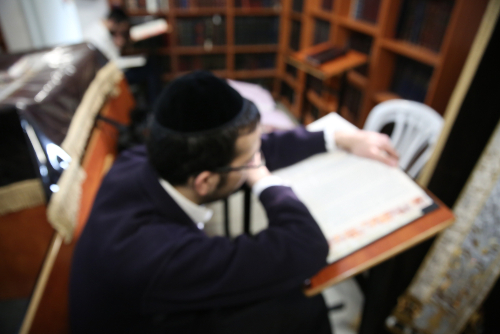Sarah’s Burial Place
In Parshat Chayei Sarah, our Matriarch Sarah passed away.
After the painful loss, Avraham Avinu (our Patriarch Abraham) wished to honor her with the most dignified burial possible. He decided that the Ma‘arat HaMachpelah was the most fitting resting place for his righteous wife and approached the Bnei Chet, the owners of the land, to purchase it from them.
When they agreed to sell it, Avraham was overjoyed and he bowed down before them (Bereishit 23:12).
A Sign Of Thanks
Why did he bow?
The Seforno explains that this was Avraham’s way of showing his deep gratitude.
Later in the parshah (torah potion), we have the act of bowing, again, used as a sign of thanks when Eliezer, Avraham’s servant, realizes that his mission to find a wife for Yitzhak is succeeding. Upon seeing how clearly Hashem (God) guided his way, Eliezer immediately bowed down in heartfelt appreciation (24:52).
But what is the connection between bowing and gratitude?
To Admit Is To Thank
Gratitude means recognizing that we are indebted to someone else and therefore humbled before our benefactor. Interestingly, the Hebrew word lehodot (to thank) shares the same root as modeh (to admit), because genuine gratitude always comes from acknowledgment and humility (Bereishit Rabbah 7). When we truly reflect on how much Hashem has blessed us, it naturally humbles us.
The Sefer Chareidim (9:3) teaches that when a person contemplates the endless kindnesses Hashem bestows each day, he becomes ashamed of his shortcomings and feels inspired to do teshuvah (repentance).
Our Leader, Our Example
Avraham Avinu, our role model example of someone who embodied gratitude was also the ultimate example of humility. He described himself as “dust and ashes.” The Orcḥot Tzaddikim Sha‘ar Ha‘anavah explains that his awareness of Hashem’s abundant blessings filled him with deep humility. The same was true of his faithful servant, Eliezer, who learned from his master to respond to Hashem’s kindness with profound appreciation.
We too can follow their example. When we recognize the abundance of good in our lives, it should move us to feel small before Hashem not out of fear, but out of awe and love.
We Bow Every Day
This idea also explains why our Sages taught us to bow during certain parts of our tefillah (blessings) that express thanks. For example, we bow both at the beginning and the end in Modim, the blessing of gratitude. Bowing reflects our submission to Hashem and our humility before His great kindness.
Rav Avigdor Miller would caution against bowing automatically, without thought. He used to say, “Don’t waste a bow.” Each bow is a chance to feel true gratitude and deepen our awareness of Hashem. He advised that before saying “Modim Anachnu Lach,” we should think of something specific we’re grateful for as we bow. That makes the moment real and heartfelt.
Modim is a unique blessing. It’s where we thank Hashem for the great miracles of our past history, and on the everyday wonders that surround us “for Your miracles that are with us each day…”
Chazal (Shochar Tov 70) teach that when we thank Hashem for miracles, we are protected from future misfortunes. Gratitude itself becomes a shield.
A story to illustrate:
During Israel’s War of Independence, the city of Tzfat was under heavy bombardment. Many Jews took shelter in the Ari Ashkenazi Shul. One day, a shell exploded in the courtyard, and shrapnel sprayed across the sanctuary. At that very moment, a man praying Shemoneh Esrei (silent amidah prayers) bowed for Modim and the shrapnel flew right over him, sparing his life! (Eretz Avoteinu, p. 263)
It’s fascinating that Modim is the only blessing in the Chazarat HaShatz (chazan’s repetition) where the congregation bows and recites a separate text together with the cḥazzan. The Abudraham explains that this is because gratitude cannot be expressed through a messenger. A servant must personally show loyalty to his master, and so too, each of us must personally express our thanks to Hashem.
From The Heart
Requests can be made through others, but gratitude which comes from the heart must be spoken directly.
A beautiful story about Rav Elyashiv זצ״ל captures this idea. In his later years, he required a complex surgery performed by a renowned surgeon flown in from America. After the operation, Rav Elyashiv asked those around him how to say “thank you” in English. They offered to thank the doctor for him, but he insisted, “No, I need to thank him myself.” He practiced the words and personally expressed his gratitude to the surgeon in his own language.
Just like Rav Elyashiv, Avraham Avinu, and Eliezer, we too can make our gratitude personal. Every bow, every thank You, every heartfelt Modim is a moment to truly feel and show our appreciation to Hashem.
By Rabbi Daniel Shasha, author of “Living Appreciation”


